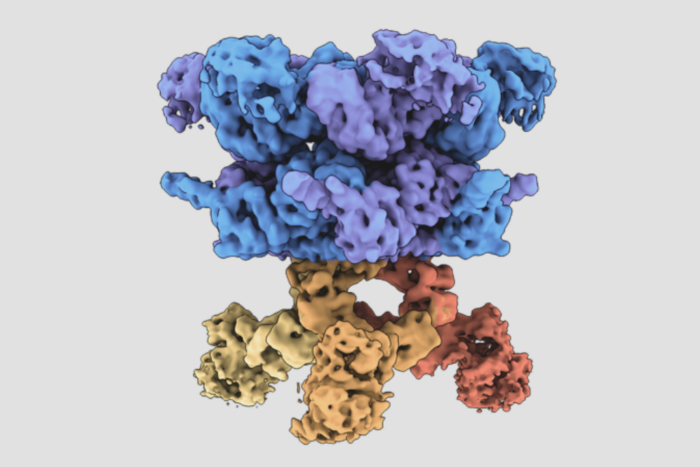Resistance to antidepressants linked to metabolism

Striking profiles: To better understand why some brains do not respond to antidepressants, first author Benedetta Bigio and her colleagues examined gene expression within rats that display the rodent equivalent of depression, before and after treatment.
Often, clinical depression has company; it shows up in the brain alongside metabolic abnormalities, such as elevated blood sugar, in the body. While studying an experimental antidepressant in rats, Rockefeller University researchers and their colleagues at Karolinska Institutet in Sweden found some molecular connections between the two disorders.
“Many patients who suffer from depression do not respond to conventional antidepressant treatment, so we set out to examine the molecular changes that might explain this resistance,” says first author Benedetta Bigio, a bioinformatics specialist in Bruce McEwen’s Rockefeller lab(opens in new window).
“Our results linked the activity of energy metabolism genes within one part of the brain to a predisposition to depression, as well as resistance to treatment,” she says. The research is described in the Proceedings of the National Academies of Science.
Testing a new treatment
It is not known why depression often is accompanied by metabolic syndrome, a constellation of conditions including abnormal levels of sugar and a type of fat known as triglycerides in the blood. The team reports having found a molecular connection between the two diseases that emerged from gene expression data they collected as part of their work on acetyl carnitine (LAC).
LAC is naturally produced by the brain, liver, and kidneys. When given to rats and mice, it has been shown to rapidly alleviate depression-like symptoms by improving harmful imbalances in the brain’s glutamate signaling system. The researchers have also begun looking for abnormalities in natural LAC levels in people with depression. Meanwhile, the LAC studies are providing a window onto the neurobiology of depression including, most recently, resistance to treatment.
To simulate a vulnerability to depression, the researchers used rats with certain behaviors thought to correspond to symptoms of depression in humans—such as disliking sweet solutions that taste pleasant to normal rats. These animals produce abnormally low levels of LAC, and, when given the compound, their behavior improves.
In order to reveal why individuals may respond differently to antidepressant treatment, Bigio and her colleagues gave the rats small doses of LAC over seven days; at larger doses, all of the rats would have responded to it.
Response and resistance to treatment
To study resistance to treatment, the researchers triggered this phenomenon in rats by exposing them to a stressful experience—a 15-minute version of a well-established test in which the rodents are forced to swim. The next day, they assessed the rats with a shorter swim test. For about half of the animals, LAC treatment was associated with more swimming; the others spent longer periods immobile, a depression-like behavior that signaled the treatment had been ineffective for them.
To determine why some rats responded while others didn’t, the researchers analyzed a region within each rat’s hippocampus called the ventral dentate gyrus (vDG), which previous work has shown is crucial for stress responses. When they sequenced the genes within this region , they found differences in many genes responsible for regulating metabolism among rats that responded to the treatment, those that didn’t, and untreated rats. These differences included, for example, increased activity of genes involved in the transport of sugar in untreated, depression-like rats.
Predictions from blood
Treatment, meanwhile, appeared to reverse many of these genetic changes, even among the animals that still acted depressed. When the researchers took a closer look, they found 27 genes that seemed to be involved in resistance to the low-dose LAC treatment, and, they suspect, to conventional antidepressants. These included those involved in the body’s ability to use fatty acids, as well as respond to insulin.
To see how LAC treatment affected an animal’s metabolism, they looked at levels of fatty acids, sugar, and insulin in their blood. While LAC treatment was linked to lower levels of these factors in responsive rats, it did not lower blood sugar or insulin for the resistant rats—suggesting a means for improving the treatment of depression.
“If these findings hold true in humans, it is possible that altered levels of blood sugar or insulin may serve as markers that could help doctors determine which patients are likely to do well on an antidepressant before prescribing it,” says Carla Nasca, the senior author and a postdoc in the lab.
“More broadly,” adds Bruce McEwen, Alfred E. Mirsky Professor and head of the Harold and Margaret Milliken Hatch Laboratory of Neuroendocrinology at Rockefeller, “our research suggests that the vDG’s role in energy metabolism should be considered as we work to develop new treatments for depression.”
 (opens in new window)Proceedings of the National Academy of Science 113, 7906–7911 (opens in new window)Proceedings of the National Academy of Science 113, 7906–7911Epigenetics and energetics in ventral hippocampus mediate rapid antidepressant action: Implications for treatment resistance(opens in new window) Benedetta Bigio, Aleksander A. Mathé, Vasco C. Sousa, Danielle Zelli, Per Svenningsson, Bruce S. McEwen, and Carla Nasca |

